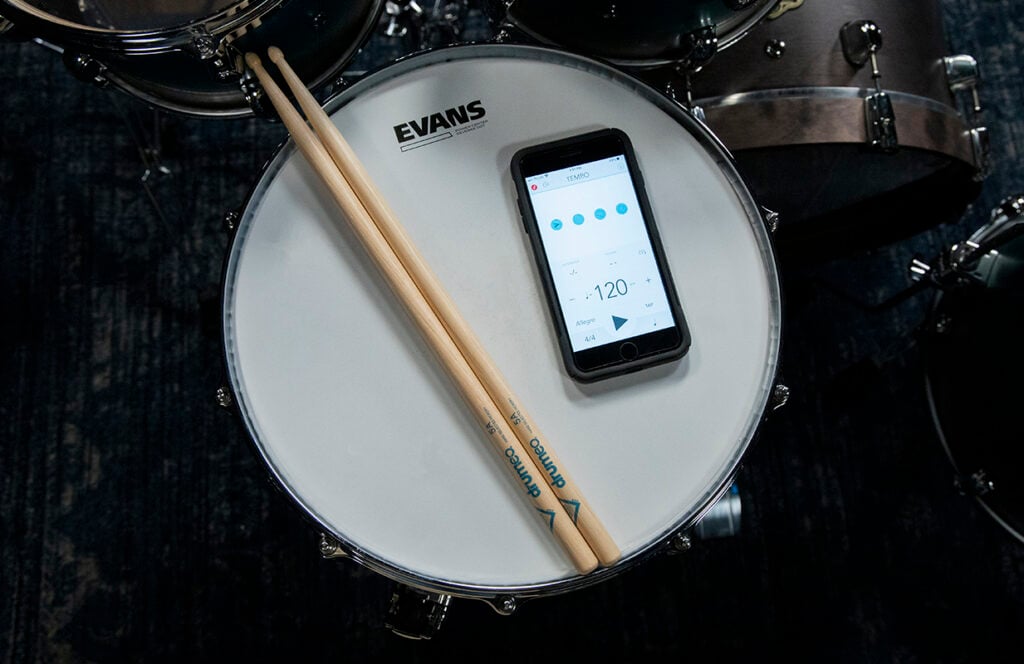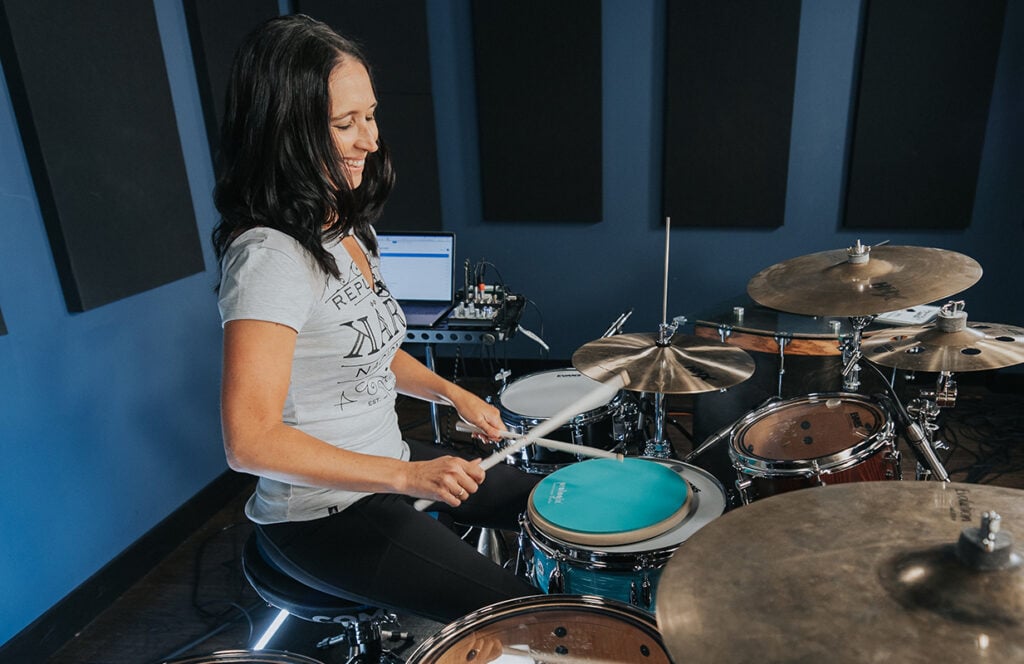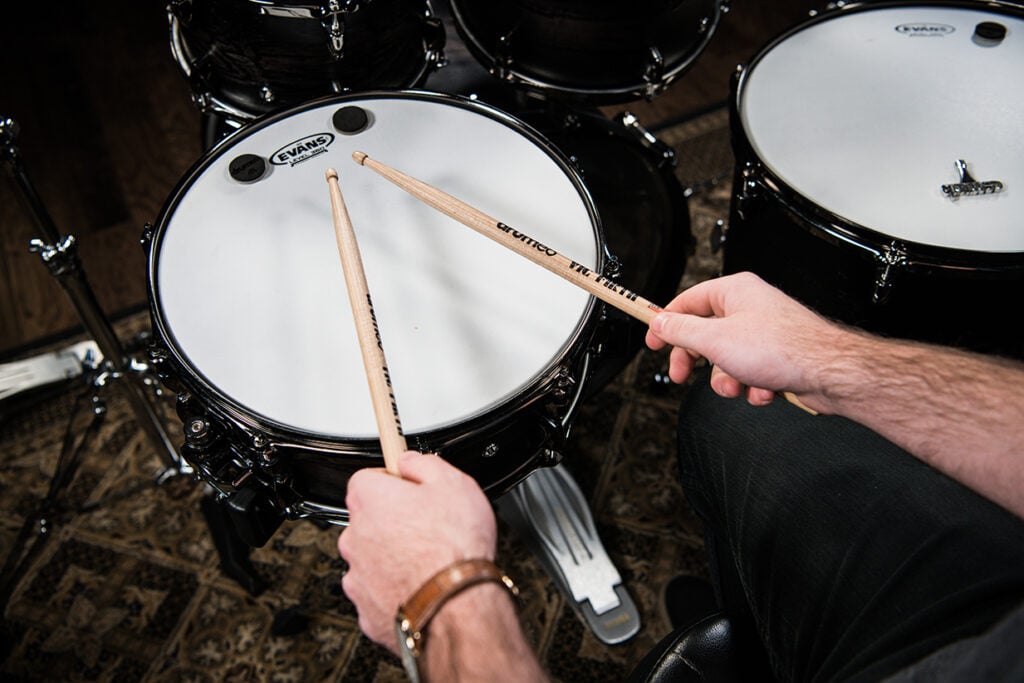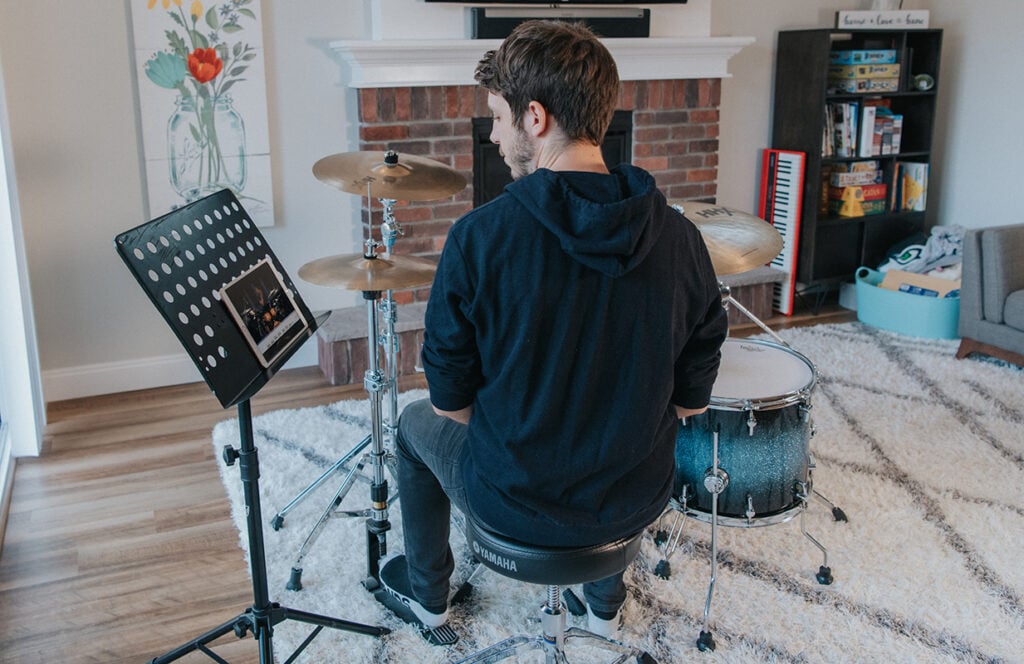The double paradiddle is a drum rudiment that builds on the single paradiddle. It has a triplet feel and it’s perfect in drum fills, beats or solos – whether you’re playing jazz or Latin or want to incorporate it into a rock ballad.

The double paradiddle consists of two alternating single strokes (“par-a”) followed by a single paradiddle.
You can sing it out loud: PAR-A-PAR-A-DI-DDLE.
This rudiment is a natural progression of the single paradiddle and flows nicely as you alternate hands.
Here’s what the double paradiddle sounds like in 6/8:
You can use this tool to practice along at the tempo that’s best for you (it’s the one Drumeo members use when practicing with the 3000+ play-along tracks inside our members area).
► Click here if you want to learn how to read drum music
You’ll know you’ve mastered the double paradiddle when it feels and sounds smooth and consistent. Both hands should eventually be equal in skill and you should be able to lead with your non-dominant hand.
If you’re struggling to grasp the pattern, try breaking it up differently in your mind: four alternating single strokes and a double stroke.
Here are some tips for playing double paradiddles.

When you’re first learning how to play something, it’s fine to test it out without a metronome as you get used to the pattern. But you shouldn’t go click-free for long. The metronome will help you develop a better internal clock and show you exactly where the timing of your strokes is inconsistent (or where it’s right on the grid).
You can buy a physical metronome at a music store or download a metronome app online.

While it might be tempting to get up to speed as quickly as possible – especially if you’re feeling confident – make sure you’re really playing the double paradiddle well before you increase the tempo.
Be honest with yourself and don’t move on until you’ve truly got it down. Don’t just say “it’s good enough”. Develop control first, and speed will come later.
Try starting with your metronome set to 60 BPM and then slowly work your way up 5 BPM at a time.

If you’re a right-handed drummer, you probably default to starting double paradiddles with your right hand.
Even though this rudiment naturally alternates the lead hand, you’d be surprised how different it feels starting the whole run with the other side.

It’s easiest to correct your posture or grip immediately if you’re watching yourself in a mirror. Try to set up a practice pad and a snare stand in front of a full length mirror if you can.
Maybe your strokes don’t look even. Maybe the height of your right stick doesn’t match the height of your left. You might even notice you’re gripping your left hand too hard. Use your reflection as a window into how you’re doing. It’s like becoming your own drum teacher!

While playing in front of a mirror will help you fix issues on the fly, you might not realize when something is wrong during your practice session. Sometimes we don’t notice issues while we’re in the middle of playing – especially if we’re concentrating hard.
Whether you’re propping your phone on your dresser or capturing it all with a camera and tripod, it’s helpful to watch your practice sessions and critique yourself from a ‘third party’ perspective.
We’ve put together a playlist with drumless tracks at different tempos so you can practice this rudiment over real music:
Once you’re comfortable playing this rudiment on a practice pad or a single drum, try moving the double paradiddle to the drum set.
You can play this pattern on one drum or break it up between multiple surfaces. Here are some exercises you can try.
#1:
#2:
#3:
#4:
#5:
Once you’ve worked through these exercises, come up with your own ideas. Any surface can be part of the pattern! You could even try alternating double paradiddles between your hands and your feet.
Learn these tunes to get comfortable with this rudiment in practice:

Carter Beauford plays this awesome pattern between the ride bell and the hi-hat, matching the bass drum to every ride hit.

This is a great way to practice orchestrating double paradiddles around the kit.

Here’s another creative way to incorporate double paradiddles into a groove.
With enough solid practice, you should start feeling more confident in your playing. From drum beats and rolls to fills and solos, mastering the double paradiddle will give you even more ways to express yourself on the drums.
If you’re enjoying this rudiment, you should also learn the single paradiddle-diddle or the triple paradiddle.


By signing up you’ll also receive our ongoing free lessons and special offers. Don’t worry, we value your privacy and you can unsubscribe at any time.
We use cookies for traffic data and advertising. Cookie Policy »